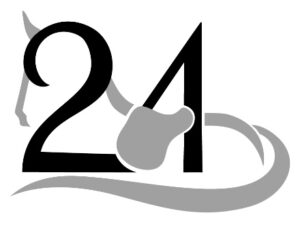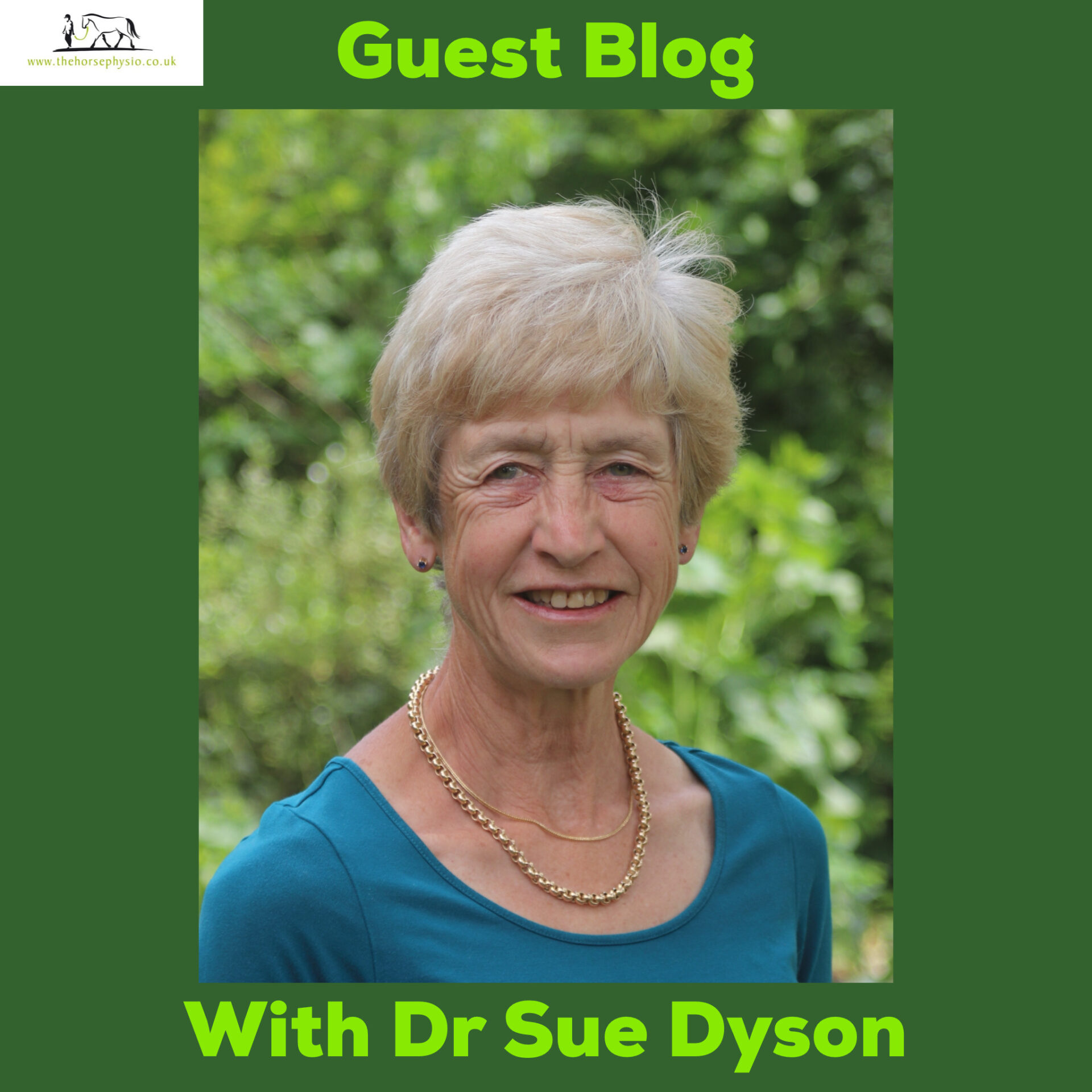Contact Sue at sue.dyson@aol.com

Proximal suspensory desmopathy, the technical term for injury to the top of the suspensory ligament, is a common cause of hindlimb lameness or poor performance in horses from all equestrian sports, including general purpose horses. The most successful long-term treatment is a surgical procedure which involves removing a piece of the nerve (neurectomy) which provides innervation to the ligament (the deep branch of the lateral plantar nerve) and cutting the dense band of tissue (fascia) which crosses the back of the ligament and attaches to the back of each splint bone. This fascia effectively squashes the suspensory ligament and some nerves which are in a ‘box’ created by the fascia, the splint bones and the back of the third metatarsal (cannon) bone). This surgical procedure, called neurectomy and fasciotomy, is highly successful in carefully selected patients, allowing at least 76% of horses to return to full athletic function at the same level or higher than before surgery.
It is not a performance enhancing procedure, it is a treatment that enables a horse to fulfil its potential. Injured hindlimb suspensory ligaments are generally strong enough to withstand athletic loading, but unless treated appropriately are a source of chronic pain. The surgery removes pain, allows the ligament to function more normally (although the muscle tissue within it will atrophy), and in many horses an improvement in infrastructure of the ligament is seen over time if assessed using ultrasonography.
Not every horse with proximal suspensory desmopathy is a suitable surgical candidate. It is contraindicated to perform this surgery if a horse has excessively straight hock conformation (≥165°) or hyperextended (sunken) fetlocks (either when standing still or when moving). Such horses are likely to have progressive degeneration and loss of function of the suspensory apparatus. Their lameness may deteriorate after surgery. It is also vitally important that the diagnosis is verified by desensitising the ligament using local anaesthesia of the deep branch of the lateral plantar nerve and observing complete resolution of lameness and any performance problems when the affected horse is ridden. The nerve block technique is not specific for proximal suspensory desmopathy, therefore the hock and cannon region must be evaluated carefully using radiography and ultrasonography, to rule out other injuries and to rule in suspensory ligament injury. Surgery will not be successful unless the diagnosis is correct.
British Eventing, at least three years ago, and British Dressage in 2022, changed the wording of their rules to bring them closer in line to those of the FEI and many people misunderstood what was implied and concluded that neurectomy was no longer permitted. The wording of the rules did not actually imply this. The British Eventing wording stated ‘A horse is not eligible to compete when a limb, or part of a limb, is hyposensitive or hypersensitive (both of which shall constitute “abnormal limb sensitivity”). Hypersensitive limbs have an excessive or abnormal reaction to palpation. Hyposensitive limbs include any alteration in sensitivity induced by a neurectomy or chemical desensitisation for as long as the alteration in sensitivity persists.’ The British Dressage wording was similar but had some spelling errors (for example ‘palpitation’ = beating or pulsing, rather than ‘palpation’ = feeling).
If the rule was designed to prohibit neurectomy for hindlimb proximal suspensory desmopathy it could not be enforced because the surgery does not alter the reaction to palpation of the limb or the body of the suspensory ligament. The only way in which it can be determined if surgery may have been performed is to identify a surgical scar, which is often not possible unless the hair coat is finely clipped. Nonetheless, the rule did act as a deterrent to some riders who might otherwise have proceeded with surgery. Untreated horses were devalued and sometimes retained in work with deleterious consequences for equine welfare. In my opinion this was very sad.
Those ‘in the know’ in the equine veterinary profession have always been led to believe that the FEI has recognised that neurectomy and fasciotomy is a common procedure and has allowed many equine athletes to continue in competition, whose careers may otherwise have come to a premature end. We understood that the decision by British Dressage to introduce the ruling in 2022 was in part because they had received complaints from competitors who considered that their success was being jeopardised by horses which had undergone ‘performance enhancing surgery’.
I believe that such complaints could have been addressed by a standard response, such as:
‘Hindlimb proximal suspensory desmopathy (PSD) is a very common injury affecting horses at all levels from all sports disciplines and has increased in frequency in recent years for a number of reasons. There are limited successful treatment options. Surgical management by neurectomy of the deep branch of the lateral plantar nerve and plantar fasciotomy in appropriately selected horses is a safe treatment enabling approximately 76% of horses return to full athletic function. It is not a performance enhancer, it merely allows a horse to return to the level at which it was prior to injury. How is this different from treating a fractured splint bone surgically, or medication of an inflamed joint? Each treatment is specific and treats an injury.’
Educating competitors is better, in my opinion, than introducing potentially ambiguous and unenforceable rules.
Rule makers act in strange ways. The 2023 British Dressage rules have been considerably expanded and under the side heading, ‘Surgical procedures that threaten horse welfare or the safety of other horses and/or athletes are not permitted’ they now state:
a) A horse is not eligible to compete when a limb or part of a limb, is hyposensitive or hypersensitive (both of which shall constitute ‘abnormal’ limb sensitivity). Hypersensitive limbs have an excessive or abnormal reaction to palpitation (I think they mean palpation). Hyposensitive limbs include any alternation (I think they mean alteration) in sensitivity induced by a neurectomy or chemical desensitisation, for as long as the alternation in sensitivity persists.
Parts b) and c) are completely new:
b) In order to continue participating in British Dressage competition, horses that have previously had these surgical procedures on any limb must be re-examined and certified as fit to compete. The registered owner will need to provide a veterinary certificate, detailing the specific nature of the operation, with written confirmation from the vet that the horse has been passed fit to return to competition. The Welfare Panel will then review the evidence presented and determine whether the procedure contravenes BD rules and regulations on grounds of equine welfare.
c) From 1 January 2023, horses that undergo surgical procedures on any limb that may put its welfare or the safety of other horses and/or athletes at risk must have a minimum period of six months’ rehabilitation. After this point, the registered owner must provide BD with a veterinary certificate post-rehabilitation, detailing the specific details of the operation, with written confirmation from the vet that the surgery does not contravene BD rules and regulations and that the horse has been passed fit to compete. The Welfare Panel will then review the evidence presented and determine whether the horse can return to competition.
I am not sure what British Dressage are trying to achieve with these rules. The neurectomy and fasciotomy procedure does not ‘threaten or put at risk horse welfare or the safety of other horses and/or athletes’. In contrast I consider that the surgery has the potential to enhance equine welfare. It is not possible to determine with certainty that the surgery has been performed. Skin sensation and the reaction to deep firm palpation are not altered after surgery. There is therefore no obligation following neurectomy and fasciotomy to acquire veterinary certification that a horse is fit to return to competition.
Please do not be deterred from proceeding with surgical management of hindlimb proximal desmopathy. It is one of the most successful surgical treatments for musculoskeletal injuries and enables a horse to progress in its training and fulfil its potential. Countless carefully selected horses have benefitted from this surgery. As with any treatment the condition of the entire horse-tack-rider triad must be addressed during the rehabilitation period and any predisposing factors, such as the footing, the way in which the horse was being worked, trimming and shoeing, the tack fit for horse and rider, and the position, fitness and coordination of the rider, must be identified and addressed. A successfully treated horse will be easier and more pleasurable to ride, should progress in its training and hopefully achieve a harmonious combination with the rider.
On the cover of the latest British Dressage Handbook it states that the objective of dressage is ‘to develop a happy, healthy athlete through harmonious education’. In my opinion this applies to all equestrian disciplines and to achieve this the athlete (the horse) has to be pain free. It further states ‘As a result horses become calm, supple, loose and flexible, but also confident, attentive and keen, thus achieving perfect understanding between athletes as a partnership’. I am not sure what is implied by ‘loose’, unless it is the opposite to tense, but the other results are what we all should be striving for with our riding partners, whatever we do with them.
(c) Sue Dyson
Keep an eye out for my next book, “Harmonious Horsemanship: How to use the Ridden Horse Ethogram to Optimise Potential, Partnership, and Performance”. This ground-breaking book is co-authored with Dr Sue Dyson, and will be available summer 2023. Sign up at www.harmonioushorsemanship.co.uk to be kept up to date with new information as it comes available.
You can find The Horse Physio on Facebook, YouTube, and Instagram. Please like and subscribe on the channels you enjoy most, and also take a minute to sign up to my newsletter.
